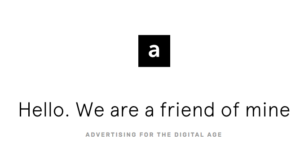Leslie Jamison, in her piece “In the Shadow of a Fairytale,” tells her story as a stepmother of a child who loves the evil stepmother trope. She begins the feature by explaining how her daughter loves the illusion of mistreatment, and then goes on to explain how evil stepmothers are often presented in children’s fairytales. Later in the article, she goes on to explain the difficulties she faces as a stepmother and compares and contrasts her relationship with her daughter with evil stepmothers and fairytale heroines, and ends the feature by exploring the realities of motherhood, both in the context of remarriage and in general. She also recognizes how her story might only apply to relatively few people (“slightly more than 10 percent of American women might relate!”) but that it relates to ideas and effect almost everyone—women, and also people with mothers.
What Jamison suggests is true in the beginning of the feature is that stepmothers have complicated relationships with their children. She introduces this point by making allusions to classic fairytales that feature evil stepmothers as antagonists, and then elaborates on her history with her daughter. The reader is likely receptive to this idea—if it wasn’t already easy to intuit that stepparents have added dimensions of complexity when it comes to being a parent to a child, many of us are familiar with stories that have villainous stepmothers. Throughout the feature, Jamison shares many personal experiences, which culminate at the end of the piece in the form of the second idea which she also suggests is true: parenting is complicated, family isn’t strictly biological, and mothers are just ordinary women. While this idea might be harder to swallow for some of the more conservative-minded readers, the audience would likely be more receptive to this idea since it is at the end of the piece, after Jamison already shared a number of her experiences being a mother. Sure, many of those experiences would be unique to stepmothers (or mothers who adopt), yet enough of them are similar to the plight of “traditional” motherhood that people who would normally be skeptical of such an idea would be pushed to see things from Jamison’s point of view.
While the reader may be receptive to the two ideas Jamison presents in the feature, certain aspects of them conflict with one another. For instance, one may not be able to immediately reconcile the idea that stepmom’s have a uniquely complicated relationship with their daughter with the idea that motherhood in and of itself is a unique experience. However, Jamison synthesizes these topics with the overarching theme of the piece, which is that mothers, step or otherwise, are just people and that every mother has a complex relationship with their child.
 https://afriendofmine.nl/
https://afriendofmine.nl/